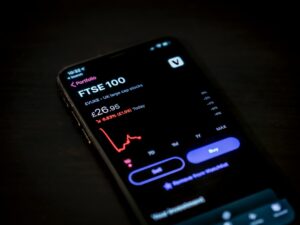Forex trading is a complex and dynamic field that requires a deep understanding of market patterns and trends. One popular pattern that forex traders often encounter is the triangle pattern. Triangle patterns are formed when price action consolidates between two converging trend lines, creating a triangular shape. These patterns are often seen as a continuation pattern, indicating that the price is likely to continue in the direction of the previous trend. However, analyzing triangle patterns can be challenging, as there are various types and subtypes that traders need to be aware of. In this article, we will explore advanced techniques for analyzing forex triangle patterns.
There are three main types of triangle patterns: ascending triangle, descending triangle, and symmetrical triangle. Each type has its own characteristics and implications for future price movement.
1. Ascending Triangle: This pattern is characterized by a horizontal resistance line and an upward sloping support line. It indicates that buyers are becoming more aggressive, pushing the price higher while sellers are unable to overcome the resistance level. The breakout from the resistance level is seen as a bullish signal, suggesting that the price is likely to continue upwards.
To analyze an ascending triangle, traders should pay attention to the volume. Typically, volume should decrease as the pattern forms and increase during the breakout. If the volume fails to confirm the breakout, it may indicate a false breakout or lack of conviction in the market.
2. Descending Triangle: This pattern is the opposite of the ascending triangle, with a horizontal support line and a downward sloping resistance line. It suggests that sellers are becoming more aggressive, pushing the price lower while buyers are unable to overcome the support level. The breakout from the support level is seen as a bearish signal, indicating that the price is likely to continue downwards.
Similar to the ascending triangle, volume plays a crucial role in analyzing the descending triangle. A decrease in volume during the pattern formation and an increase during the breakout confirms the validity of the pattern.
3. Symmetrical Triangle: This pattern is characterized by converging trend lines, with both the support and resistance lines sloping towards each other. It suggests a period of consolidation and indecision in the market, with neither buyers nor sellers gaining control. The breakout from the symmetrical triangle can occur in either direction, indicating that traders should be prepared for both bullish and bearish scenarios.
Analyzing a symmetrical triangle requires a close examination of the price action. Traders should look for higher lows and lower highs within the pattern, indicating decreasing volatility. Additionally, volume should decrease as the pattern forms and increase during the breakout, providing confirmation of the pattern’s validity.
In addition to these basic triangle patterns, traders should also be aware of various subtypes that can occur within each pattern. These subtypes include the ascending broadening wedge, descending broadening wedge, contracting triangle, and expanding triangle. Each subtype has its own unique characteristics and implications for future price movement.
To effectively analyze triangle patterns, traders should use a combination of technical analysis tools such as trend lines, moving averages, and oscillators. Trend lines help identify the boundaries of the pattern, while moving averages can provide additional confirmation of the pattern’s validity. Oscillators such as the Relative Strength Index (RSI) or the Moving Average Convergence Divergence (MACD) can help identify potential entry and exit points.
It is important to note that triangle patterns are not foolproof and can sometimes result in false breakouts. Traders should always use proper risk management techniques and wait for confirmation before entering a trade based on a triangle pattern.
In conclusion, analyzing forex triangle patterns requires a deep understanding of their characteristics and implications. Traders should be able to identify the different types and subtypes of triangle patterns and use technical analysis tools to confirm their validity. By mastering these advanced techniques, traders can gain a competitive edge in the forex market and make more informed trading decisions.






